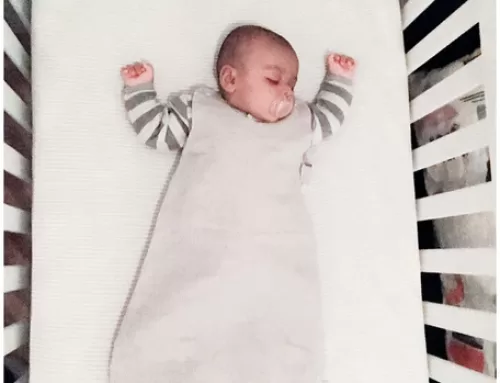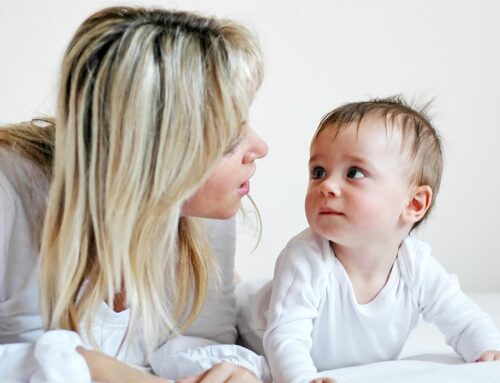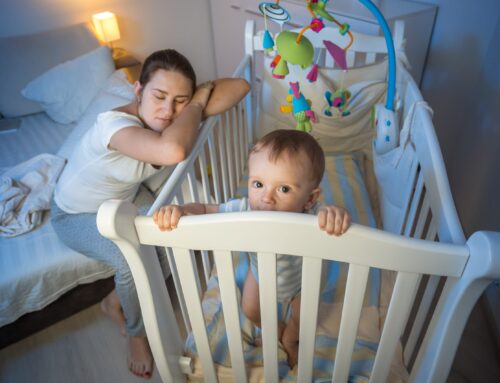How Do I Start Toilet Training?
We have previously looked at how you can know if your child is ready to toilet train. Here’s a small recap –
- Usually, children start toilet training from 12 to 18 months of age, this could be sooner or later depending on your child’s development.
- Do they have regular bladder and bowel movements?
- Is your child uncomfortable with a wet or soiled diaper?
- Can they stay dry in their diaper for at least 2 hours?
- Can they follow simple instructions such as stand up, sit down, wait, etc
- Are they able to dress or undress?
- Can they remain still or seated for 1 to 5 minutes?
If your child is able to do most of these then you are ready to start toilet training, if not then we advise waiting until their skills are developed.
Now that you know your child is ready, question is, how do you start? What do you need to start? We are here to answer your questions! Well before you start toilet training, get your child used to these big milestones. Here are a few examples –
- Start naming or labelling things in the bathroom or going to the toilet, such as ‘I need to go’, ‘wee’, ‘poo’, ‘ toilet seat’ or ‘potty’.
- When you change your child’s diaper, empty what you can from the dirty or wet diaper in the potty so they start relating to what the potty is used for.
- Start putting on their training pants or underwear so they get used to the feeling of wet VS dry.
- Make sure you give your child a lot of fibre and water to avoid constipation. Constipation will hinder the program.
- Allow your child to get used to being in the bathroom. You could do activities they really enjoy in the bathroom.
Before you start your toilet training program, it’s essential to get the right equipment so the process is easier and more comfortable for your child. Here’s a list of a few of our favourites.
- Toilet training seats/child-sized toilet or potty – This depends on your preference and also what your child will like or prefer. Encourage your child to use both the toilet training seat as well as the toilet. A potty is easy to move around and might seem less scary to your child whereas a toilet is where they will have to eventually transition to.
- Step or footstool – If you decide to use the toilet seat then you would need a step or footstool so your child can get onto the toilet. This also acts as a resting place for their feet whilst they use the toilet instead of having them dangle down.
- Small seat – when using the toilet seat, your child would need a smaller seat that fits inside the big toilet seat.
- Timer – This could be a stopwatch on your phone or a separate timer where you can keep track of when your child needs to be taken to the toilet.
Once that is sorted, you can start letting your child be in their underwear. This is to get them used to feeling when their underwear is wet or dry. It will also help them to, eventually, learn to hold their bladder. Gradually you will move to your child wearing underwear or training pants all the time at home. Don’t go back to diapers unless at night or during daytime naps.
Once your child starts wearing underwear, dress your child in clothes that are easy and quick to take off. Specifically for toilet training, you can use training pants or pull-ups.
- Training pants – they absorb less than a diaper but are perfect for accidental bladder or bowel movements.
- Pull-ups – they absorb better than training pants and are perfect for when you go out. It’s also a good alternative to underwear.
- Underwear – you can make toilet training exciting by letting your child choose their underwear.
It’s best to start toilet training when you don’t have any big changes coming up. This means any holidays or moving houses or starting daycare, etc. It’s best to stay at home for a few days when you start and when you do go out, keep track of the nearest toilets, take spare clothes with you and waterproof bags for dirty or wet clothes. If they go to visit friends or family, let others know that your child is in toilet training and will require help to use the toilet. Parents and individuals with close contact with the child need to be patient and consistent with the program. It can take weeks or months for your child to be toilet trained with few accidents or setbacks which means you will need to clean up often. Be prepared for the time and effort it will involve.
It’s equally important to gradually start toilet training. Start by adding going to the toilet as a part of their daily routine. You can start by taking them to the toilet in the morning or before/after meals. When you notice your child showing signs like passing wind, wriggling around or moving away from you, try and encourage them to go to the toilet. Don’t force them, just encourage them at the beginning. When your child is changing an activity, such as finishing their snack and going to play, remind them or ask them if they would like to go to the toilet. If your child does sit on the toilet and hasn’t gone within 3 to 5 minutes, then let them go. You don’t want them to feel like it’s a punishment. Instead praise them for trying and slowly remove your praise once they learn to sit on the toilet long enough.
Next is creating a routine with your child. Observe and take notes for one to two weeks before you start toilet training. Points you would need to focus on would include:
- What time do they usually go to the toilet?
- How long can they stay dry in their diapers?
- When do they have wet diapers?
- How long after a meal do they need to use the toilet?
Getting some basic information like this will help you to notice any patterns and create a schedule or routine with your child. This will then allow you to take your child to the toilet at regular intervals to encourage toileting. For example, 30 minutes after they wake up, after they have eaten and before bedtime.
When your child goes to the toilet, reinforce them immediately! These reinforcers can be toys they really enjoy or any activity to which they don’t usually have access. These need to be kept only for toilet training so they can be an extra incentive for toileting.
Whilst toilet training, you will have accidents and setbacks. It’s all part of the process. Your child might get upset when an accident happens; reassure them that it’s okay. Some tips to avoid accidents are:
- If your child says they need to go to the toilet, take them right away.
- If you notice they haven’t gone in a while, remind them as they might be distracted or busy with activities or toys.
- Check with your child if they would like to use the toilet before a long drive or an activity. If they don’t wish to, it’s fine.
- Make sure the potty or the toilet is easy to get to or use when out and about.
- Take them to the toilet before bedtime.
When it comes to staying dry overnight, it can take months or years for your child to learn and develop this skill. The first sign of them showing they are ready for this is when they have a dry diaper first thing in the morning. This is when you can stop diapers overnight and shift to underwear. If your child wets the bed don’t worry too much, it’s normal even for school-aged children. Look for our next blog post on what you can do about bedwetting.
لقد بحثنا سابقًا في كيفية معرفة ما إذا كان طفلك مستعدًا للتدريب على استخدام المرحاض.
إليك خلاصة صغيرة :
- 1. عادة، يبدأ الأطفال في التدريب على استخدام المرحاض من عمر 12 إلى 18 شهرًا، وقد يكون ذلك ممكنًا عاجلاً أم آجلاً حسب نمو طفلك.
- 2. هل لديهم حركات منتظمة في المثانة والأمعاء؟
- 3. هل يشعر طفلك بعدم الراحة عند استخدام الحفاضة المبللة أو المتسخة؟
- 4. هل يمكنهم البقاء جافين في حفاضاتهم لمدة ساعتين على الأقل؟
- 5. هل يمكنهم اتباع التعليمات البسيطة مثل الوقوف والجلوس والانتظار وما إلى ذلك
- 6. هل هم قادرون على ارتداء الملابس أو خلعها؟
- 7. هل يمكنهم البقاء ساكنين أو جالسين لمدة تتراوح من دقيقة إلى خمس دقائق؟
إذا كان طفلك قادرًا على القيام بمعظم هذه الأمور، فأنت مستعد لبدء التدريب على استخدام المرحاض، إذا لم يكن كذلك فننصح بالانتظار حتى يتم تطوير مهاراتهم.
الآن بعد أن عرفت أن طفلك جاهز، السؤال هو كيف تبدأ؟ ماذا تحتاج للبدا؟ نحن هنا للرد على الأسئلة الخاصة بك! حسنًا، قبل أن تبدأ التدريب على استخدام المرحاض، احصل على اعتاد طفلك على هذه المعالم الكبيرة.
وفيما يلي بعض الأمثلة على ذلك :
- 1. ابدأ بتسمية أو تسمية الأشياء في الحمام أو الذهاب إلى المرحاض، مثل “أنا”.
بحاجة للذهاب”، أو “التبول”، أو “التبرز”، أو “مقعد المرحاض” أو “القعادة”.
- 2. عند تغيير حفاضة طفلك، أفرغي ما تستطيعين من القذارة أو الرطب الحفاضات في القصرية حتى يبدأوا بالتعرف على الغرض الذي تستخدم فيه القصرية.
- 3. ابدأ بارتداء سراويل التدريب أو الملابس الداخلية حتى يعتاد على هذا الشعور من الرطب مقابل الجاف.
- 4. تأكدي من إعطاء طفلك الكثير من الألياف والماء لتجنب الإمساك سوف يعيق البرنامج.
- 5. دع طفلك يعتاد على التواجد في الحمام. يمكنك القيام بالأنشطة استمتع حقًا في الحمام.
قبل أن تبدأ برنامج التدريب على استخدام المرحاض، من الضروري الحصول على المعدات المناسبة لذلك العملية أسهل وأكثر راحة لطفلك.
وهنا قائمة عدد قليل من لدينا المفضلة:
- 1. مقاعد التدريب على استخدام المرحاض/مرحاض أو قعاده بحجم الأطفال – هذا يعتمد على تفضيلاتك وأيضًا ما سيحبه طفلك أو يفضله. شجع طفلك على استخدام كلاً من مقعد التدريب على استخدام المرحاض وكذلك المرحاض. من السهل تحريك النونية وقد تكون كذلك يبدو أقل رعبًا لطفلك، في حين أن المرحاض هو المكان الذي سيضطر إليه الانتقال في نهاية المطاف.
- 2. درجة أو مسند قدم – إذا قررت استخدام مقعد المرحاض، فستحتاج إلى درجة أو مسند للقدمين حتى يتمكن طفلك من الدخول إلى المرحاض. وهذا أيضًا بمثابة مكان للراحة لأقدامهم أثناء استخدامهم للمرحاض بدلا من جعلهم يتدلون للأسفل.
- 3. مقعد صغير – عند استخدام مقعد المرحاض، سيحتاج طفلك إلى مقعد أصغر حجمًا يناسب داخل مقعد المرحاض الكبير.
- 4. الموقت – يمكن أن يكون هذا بمثابة ساعة توقيت على هاتفك أو مؤقت منفصل حيثما كنت يمكنه تتبع الوقت الذي يحتاج فيه طفلك إلى الذهاب إلى المرحاض.
وبمجرد الانتهاء من ذلك، يمكنك البدء في ترك طفلك يرتدي ملابسه الداخلية. هذا هو الحصول على اعتادوا على الشعور عندما تكون ملابسهم الداخلية مبللة أو جافة. وفي النهاية، يتعلمون كيفية الإمساك بالمثانة. تدريجيا سوف تنتقل إلى ارتداء طفلك الملابس الداخلية أو سراويل التدريب طوال الوقت في المنزل. لا تعود إلى الحفاضات إلا في ليلاً أو أثناء القيلولة أثناء النهار.
بمجرد أن يبدأ طفلك بارتداء الملابس الداخلية، ألبسي طفلك ملابس سهلة وبسيطة سريع الإقلاع. خصيصًا للتدريب على استخدام المرحاض، يمكنك استخدام سراويل التدريب أو أدوات السحب.
- 1. سراويل التدريب – تمتص أقل من الحفاضات، ولكنها مثالية للاستخدام العرضي حركات المثانة أو الأمعاء.
- 2. تمارين السحب – تمتص بشكل أفضل من سراويل التدريب وهي مثالية عندما تذهب خارج. كما أنه بديل جيد للملابس الداخلية.
- 3. الملابس الداخلية – يمكنك أن تجعل التدريب على استخدام المرحاض أمرًا مثيرًا من خلال السماح لطفلك بالاختيار ملابسهم الداخلية.
من الأفضل أن تبدأ التدريب على استخدام المرحاض عندما لا يكون لديك أي تغييرات كبيرة قادمة. هذا يعني أي عطلة أو تغيير المنزل أو بدء الرعاية النهارية، وما إلى ذلك. من الأفضل البقاء في المنزل لبضعة أيام عند البدء وعند الخروج، قم بتتبع أقرب المراحيض، خذ معك ملابس احتياطية وأكياس مقاومة للماء للملابس المتسخة أو المبللة. إذا كنتم ذاهبين إلى زيارة الأصدقاء أو العائلة، أخبر الآخرين أن طفلك في مرحلة التدريب على استخدام المرحاض وأنه سيحتاج إلى ذلك مساعدة على استخدام المرحاض. يحتاج الآباء والأفراد الذين لديهم اتصال وثيق بالطفل إلى ذلك التحلي بالصبر والتوافق مع البرنامج. قد يستغرق الأمر أسابيع أو أشهر حتى يتمكن طفلك من ذلك تدرب على استخدام المرحاض مع وجود عدد قليل من الحوادث أو النكسات مما يعني أنك ستحتاج إلى التنظيف غالباً. كن مستعدًا للوقت والجهد الذي سيتطلبه الأمر.
ومن المهم أيضًا البدء بالتدريب على استخدام المرحاض تدريجيًا. ابدأ بإضافة الذهاب إلى المرحاض كجزء من روتينهم اليومي. يمكنك البدء بأخذهم إلى المرحاض في الصباح أو قبل / بعد الوجبات. عندما تلاحظين أن طفلك تظهر عليه علامات مثل خروج الريح، يتلوى أو يبتعد عنك، حاول تشجيعه على الذهاب إلى المرحاض.
لا تجبرهم، فقط شجعهم في البداية. عندما يقوم طفلك بتغيير النشاط، مثل إنهاء وجبتهم الخفيفة والذهاب للعب، ذكّرهم أو اسألهم عما إذا كانوا يفعلون ذلك ترغب في الذهاب إلى المرحاض. إذا كان طفلك يجلس على المرحاض ولم يذهب خلال 3 لمدة 5 دقائق، ثم اتركهم. أنت لا تريدهم أن يشعروا أنه عقاب.
بدلًا من ذلك، قم بمدحهم لمحاولتهم وإزالة مديحك ببطء بمجرد أن يتعلموا الجلوس المرحاض لفترة كافية.
التالي هو إنشاء روتين مع طفلك. مراقبة وتدوين الملاحظات لمدة أسبوع إلى أسبوعين قبل أن تبدأ التدريب على استخدام المرحاض.
تشمل النقاط التي تحتاج إلى التركيز عليها ما يلي:
- 1. في أي وقت يذهبون عادة إلى المرحاض؟
- 2. إلى متى يمكنهم البقاء جافين في حفاضاتهم؟
- 3. متى تكون حفاضاتهم مبللة؟
- ما هي المدة التي يستغرقها استخدام المرحاض بعد تناول الوجبة؟
سيساعدك الحصول على بعض المعلومات الأساسية مثل هذه على ملاحظة أي أنماط وإنشاء ملف جدول أو روتين مع طفلك. سيسمح لك هذا بعد ذلك بأخذ طفلك إلى المرحاض على فترات منتظمة لتشجيع استخدام المرحاض. على سبيل المثال، بعد 30 دقيقة من استيقاظهم، بعد تناول الطعام وقبل النوم.
عندما يذهب طفلك إلى المرحاض، عززه على الفور! يمكن أن تكون هذه التعزيزات الألعاب التي يستمتعون بها حقًا أو أي نشاط لا يمكنهم الوصول إليه عادةً. هؤلاء يجب الاحتفاظ بها فقط للتدريب على استخدام المرحاض حتى تكون حافزًا إضافيًا لاستخدام المرحاض.
أثناء التدريب على استخدام المرحاض، سوف تتعرض لحوادث ونكسات. كل هذا جزء من العملية. قد ينزعج طفلك عند وقوع حادث؛ طمأنتهم أنه لا بأس
بعض النصائح لتجنب الحوادث هي:
- 1. إذا قال طفلك أنه بحاجة للذهاب إلى المرحاض، خذه على الفور.
- 2. إذا لاحظت أنهم لم يذهبوا منذ فترة، فذكّرهم بما قد يكونون عليه مشتتًا أو مشغولًا بالأنشطة أو الألعاب.
- 3. تحقق مع طفلك إذا كان يرغب في استخدام المرحاض قبل رحلة طويلة أو رحلة طويلة نشاط. إذا لم يرغبوا في ذلك، فلا بأس.
- 4. تأكدي من سهولة الوصول إلى القصرية أو المرحاض أو استخدامهما عند الخروج والتجول.
- 5. خذهم إلى المرحاض قبل النوم.
عندما يتعلق الأمر بالبقاء جافًا طوال الليل، فقد يستغرق الأمر شهورًا أو سنوات حتى يتمكن طفلك من ذلك تعلم وتطوير هذه المهارة. العلامة الأولى التي تظهر أنهم مستعدون لذلك هي عندما يكون لديهم حفاضة جافة أول شيء في الصباح. هذا هو الوقت الذي يمكنك فيه التوقف حفاضات بين عشية وضحاها والتحول إلى الملابس الداخلية. إذا كان طفلك يبلل السرير فلا تقلقي أيضًا كثيرًا، إنه أمر طبيعي حتى بالنسبة للأطفال في سن المدرسة. ابحث عن منشور مدونتنا التالي حول ماذا يمكنك القيام به حيال التبول اللاإرادي.




